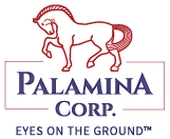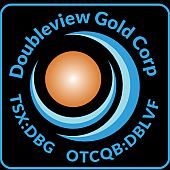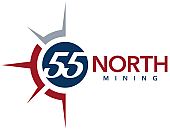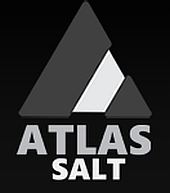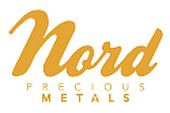 Goldshore Drills 6.3 g/t Au over 58.85m at Moss Lake Gold Project in Ontario
Goldshore Drills 6.3 g/t Au over 58.85m at Moss Lake Gold Project in Ontario
Extensive Drill Program In Progress; Four Rigs Fully Operating
VANCOUVER, B.C., March 2, 2022: Goldshore Resources Inc. (TSXV: GSHR / OTCQB: GSHRF / FWB: 8X00) (“Goldshore” or the “Company”), is pleased to announce high grade gold assay results from hole MMD-21-008, which continues to confirm gold mineralization at the Moss Lake Gold Deposit in Northwest Ontario, Canada.
Extensive High-Grade Gold Mineralization in Hole MMD-21-008
- 58.85m @ 6.30 g/t Au from 103.3m including;
- 4.35m @ 61.1 g/t Au from 103.3m
- 9.30m @ 8.76 g/t Au from 139.9m
- 19.0m @ 3.33 g/t Au from 359m
- Broad mineralized zone averaging 0.81 g/t Au over 274.7m from 103.3m*
*When calculated using a top cut of 30 g/t Au
Key Highlights
- High Grade Structures Emerging: Three high-grade zones in MMD-21-008 present a compelling new target style which the Company is pursuing with on-going drilling.
- Footprint of Mineralization Remains Unknown: MMD-21-008 was collared in altered rocks with low grade gold mineralization showing that the system remains open to the north and will require further drilling to define the northern edge of the system.
- Second Drilling Contractor Mobilized: To accelerate drilling the Company is planning to have 5 to 7 rigs active after the spring break-up.
Brett Richards, President and Chief Executive Officer of Goldshore commented: “These drill results continue to confirm our belief that our aggressive drilling campaign will increase the tonnes and grade over the historic Mineral Resource model through the careful definition of discrete high-grade structures and expansion of the bulk tonnage volume. We have also introduced a second drill contractor to the project and are moving towards having 5 to 7 rigs active over the summer.

Figure 1: Drill section through MMD-21-008 showing mineralized intercepts relative to the 2013 grade model

Figure 2: Drill plan showing the 2021 drill holes relative to the 2013 resource model and historic drill hole location
Table 1: Significant downhole gold intercepts in MMD-21-008

Table 2: Location of MMD-21-008 plus a restatement of all holes reported to date with accurate collar surveys

MMD-21-008 was drilled at -55° as a first step back (~150 meters to the north) of the initial definition drill plan in the Moss Lake Main Zone. It aimed to define the northern boundary of the gold mineralized volume and to test the system at depth.
The drill hole collared in altered rocks with low grade gold mineralization meaning that the system remains open to the north. Drilling challenges caused the hole to be terminated prematurely before the mineralized structures to the southeast could be tested. These structures will be defined in the coming months.
The drill hole intersected a sequence of moderate to intensely sericite-albite and sericite-chlorite altered intermediate to felsic volcaniclastic sequences intruded by three similarly altered diorite intrusions that are known to be the main host to mineralization at Moss Lake. The highest-grade mineralized zone from 103.3-107.65m is associated with a series of highly deformed chalcopyrite-pyrite-molybdenum stringers within the greater mineralized and sericite-silica altered diorite package.
A steeper angled hole beneath MMD-21-008 is planned from the same setup. This has been deferred to prioritize drill holes planned from pads that are only accessible during winter.
Peter Flindell, VP Exploration commented: “This drill hole intersected five separate intervals exceeding 20 g/t Au, which for the first time has shown the positive impact of very high grades on the broad volumes of mineralization we are drilling. The metallurgical performance of high- and low-grade mineralization is currently being tested by a comprehensive first-stage test program that will systematically define geometallurgical types for domaining purposes and detailed metallurgical test work in the coming months.”
Analytical and QA/QC Procedures
All samples were sent to ALS Geochemistry in Thunder Bay for preparation and analysis was performed in the ALS Vancouver analytical facility. ALS is accredited by the Standards Council of Canada (SCC) for the Accreditation of Mineral Analysis Testing Laboratories and CAN-P-4E ISO/IEC 17025. Samples were analyzed for gold via fire assay with an AA finish (“Au-AA23”) and 48 pathfinder elements via ICP-MS after four-acid digestion (“ME-MS61”). Samples that assayed over 10 ppm Au were re-run via fire assay with a gravimetric finish (“Au-GRA21”).
In addition to ALS quality assurance / quality control (“QA/QC”) protocols, Goldshore has implemented a quality control program for all samples collected through the drilling program. The quality control program was designed by a qualified and independent third party, with a focus on the quality of analytical results for gold. Analytical results are received, imported to our secure on-line database and evaluated to meet our established guidelines to ensure that all sample batches pass industry best practice for analytical quality control. Certified reference materials are considered acceptable if values returned are within three standard deviations of the certified value reported by the manufacture of the material. In addition to the certified reference material, certified blank material is included in the sample stream to monitor contamination during sample preparation. Blank material results are assessed based on the returned gold result being less than ten times the quoted lower detection limit of the analytical method. The results of the on-going analytical quality control program are evaluated and reported to Goldshore by Orix Geoscience Inc.
About Goldshore
Goldshore is an emerging junior gold development company, and owns the Moss Lake Gold Project located in Ontario. Wesdome Gold Mines Ltd. is currently a strategic shareholder of Goldshore with an approximate 26% equity position in the Company. Well-financed and supported by an industry-leading management group, board of directors and advisory board, Goldshore is positioned to advance the Moss Lake Gold Project through the next stages of exploration and development.
About the Moss Lake Gold Project
The Moss Lake Gold Project is located approximately 100 km west of the city of Thunder Bay, Ontario. It is accessed via Highway 11 which passes within 1 km of the property boundary to the north. The Moss Lake Gold Project covers 14,292 hectares and consists of 282 unpatented and patented mining claims.
Moss Lake hosts a number of gold and base metal rich deposits including the Moss Lake Deposit, the East Coldstream Deposit (Table 3), the historically producing North Coldstream Mine (Table 4), and the Hamlin Zone, all of which occur over a mineralized trend exceeding 20 km in length. A historical preliminary economic assessment was completed on Moss Lake in 2013 and published by Moss Lake Gold¹. A historical mineral resource estimate was completed on the East Coldstream Deposit in 2011 by Foundation Resources Inc²,³. In addition to these zones, the Moss Lake Gold Project also hosts a number of under-explored mineral occurrences which are reported to exist both at surface and in historically drilled holes. The Moss Lake Deposit is a shear-hosted disseminated-style gold deposit which outcrops at surface. It has been drilled over a 2.5 km length and to depths of 300 m with 376 holes completed between 1983 and 2017. The last drilling program conducted in 2016 and 2017 by Wesdome Gold Mines Ltd. (“Wesdome”), which consisted of widely spaced holes along the strike extension of the deposit was successful in expanding the mineralized footprint and hydrothermal system 1.6 km to the northeast. Additionally, the deposit remains largely open to depth. In 2017, Wesdome completed an induced polarization survey which traced the potential extensions of pyrite mineralization associated with the Moss Lake Deposit over a total strike length of 8 km and spanning the entire extent of the survey grids.
The East Coldstream Deposit is a shear-hosted disseminated-style gold deposit which locally outcrops at surface. It has been drilled over a 1.3 km length and to depths of 200 m with 138 holes completed between 1988 and 2017. The deposit remains largely open at depth and may have the potential for expansion along strike. Historic drill hole highlights from the East Coldstream Deposit include 4.86 g/t Au over 27.3 m in C-10-15.
The historically producing North Coldstream Mine is reported to have produced significant amounts of copper, gold and silver⁴ from mineralization with potential iron-oxide-copper-gold deposit style affinity. The exploration potential immediately surrounding the historic mining area is not currently well understood and historic data compilation is required.
The Hamlin Zone is a significant occurrence of copper and gold mineralization, and also of potential iron-oxide-copper-gold deposit style affinity. Between 2008 and 2011, Glencore tested Hamlin with 24 drill holes which successfully outlined a broad and intermittently mineralized zone over a strike length of 900 m. Historic drill hole highlights from the Hamlin Zone include 0.9 g/t Au and 0.35% Cu over 150.7 m in HAM-11-75.
The Moss Lake, East Coldstream and North Coldstream deposits sit on a mineral trend marked by a regionally significant deformation zone locally referred to as the Wawiag Fault Zone in the area of the Moss Lake Deposit. This deformation zone occurs over a length of approximately 20 km on the Moss Lake Gold Project and there is an area spanning approximately 7 km between the Moss Lake and East Coldstream deposits that is significantly underexplored.
Table 1: Historical Mineral Resources ¹ ² ³

Notes:
(1) Source: Poirier, S., Patrick, G.A., Richard, P.L., and Palich, J., 2013. Technical Report and Preliminary Economic Assessment for the Moss Lake Project, 43-101 technical report prepared for Moss Lake Gold Mines Ltd. Moss Lake Deposit resource estimate is based on 0.5 g/t Au cut-off grade for open pit and 2.0 g/t Au cut-off grade for underground resources.
(2) Source: McCracken, T., 2011. Technical Report and Resource Estimate on the Osmani Gold Deposit, Coldstream Property, Northwestern Ontario, 43-101 technical report prepared for Foundation Resources Inc. and Alto Ventures Ltd. East Coldstream Deposit resource estimate is based on a 0.4 g/t Au cut-off grade.
(3) The reader is cautioned that the above referenced “historical mineral resource” estimates are considered historical in nature and as such is based on prior data and reports prepared by previous property owners. A qualified person has not done sufficient work to classify the historical estimates as current resources and Goldshore is not treating the historical estimates as current resources. Significant data compilation, re-drilling, re-sampling and data verification may be required by a qualified person before the historical estimate on the Moss Lake Gold Project can be classified as a current resource. There can be no assurance that any of the historical mineral resources, in whole or in part, will ever become economically viable. In addition, mineral resources are not mineral reserves and do not have demonstrated economic viability. Even if classified as a current resource, there is no certainty as to whether further exploration will result in any inferred mineral resources being upgraded to an indicated or measured mineral resource category.
Table 2: Reported Historical Production from the North Coldstream Deposit ⁴

Note:
(4) Source: Schlanka, R., 1969. Copper, Nickel, Lead and Zinc Deposits of Ontario, Mineral Resources Circular No. 12, Ontario Geological Survey, pp. 314-316.
Peter Flindell, MAusIMM, MAIG , Vice President, Exploration of the Company, a qualified person under NI 43-101, has approved the scientific and technical information contained in this news release.
Neither the TSXV nor its Regulation Services Provider (as that term is defined in the policies of the TSXV) accepts responsibility for the adequacy or accuracy of this release.
For More Information – Please Contact:
Brett A. Richards
President, Chief Executive Officer and Director
Goldshore Resources Inc.
P. +1 604 288 4416 M. +1 905 449 1500
E. [email protected]
W. www.goldshoreresources.com
Cautionary Note Regarding Forward-Looking Statements
This news release contains statements that constitute “forward-looking statements.” Such forward looking statements involve known and unknown risks, uncertainties and other factors that may cause the Company’s actual results, performance or achievements, or developments to differ materially from the anticipated results, performance or achievements expressed or implied by such forward-looking statements. Forward looking statements are statements that are not historical facts and are generally, but not always, identified by the words “expects,” “plans,” “anticipates,” “believes,” “intends,” “estimates,” “projects,” “potential” and similar expressions, or that events or conditions “will,” “would,” “may,” “could” or “should” occur.
Forward-looking statements in this news release include, among others, statements relating to expectations regarding the exploration and development of the Moss Lake Gold Project, including planned drilling activities, an update to the historical preliminary economic assessment, and other statements that are not historical facts. By their nature, forward-looking statements involve known and unknown risks, uncertainties and other factors which may cause our actual results, performance or achievements, or other future events, to be materially different from any future results, performance or achievements expressed or implied by such forward-looking statements. Such factors and risks include, among others: the Company may require additional financing from time to time in order to continue its operations which may not be available when needed or on acceptable terms and conditions acceptable; compliance with extensive government regulation; domestic and foreign laws and regulations could adversely affect the Company’s business and results of operations; the stock markets have experienced volatility that often has been unrelated to the performance of companies and these fluctuations may adversely affect the price of the Company’s securities, regardless of its operating performance; and the impact of COVID-19.
The forward-looking information contained in this news release represents the expectations of the Company as of the date of this news release and, accordingly, is subject to change after such date. Readers should not place undue importance on forward-looking information and should not rely upon this information as of any other date. The Company undertakes no obligation to update these forward-looking statements in the event that management’s beliefs, estimates or opinions, or other factors, should change.
This news release does not constitute an offer to sell, or a solicitation of an offer to buy, any securities in the United States. The securities have not been and will not be registered under the United States Securities Act of 1933, as amended (the “U.S. Securities Act”) or any state securities laws and may not be offered or sold within the United States or to U.S. Persons unless registered under the U.S. Securities Act and applicable state securities laws or an exemption from such registration is available.








